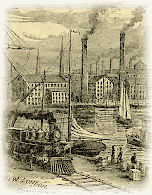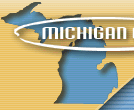What is the History Themes Project?
The History Themes Project is an effort to create for Michigan teachers and students a reasonable and valid selection of important events, people, and ideas for United States History.
Purpose: Why Did We Need a History Themes Project?
The content standards and benchmarks for social studies in the Michigan Curriculum Framework are very specific about how we expect students to use historical knowledge. The four Michigan History Content Standards which reflect the National History Standards, ask students to be able to:
- use time and chronology of important historical events in the history of the United States to explain cause and effect
- to show a comprehension of the past by being able to tell the story of the past using important events, places and people from the past
- to use primary and secondary source documents to analyze the past from a variety of points of view
- to judge decisions from the past
While the content standards are specific regarding the acquisition of an historical perspective, they do not tell teachers and their students which historical events and people are important. The goal of both the Curriculum and MEAP Offices at the Department of Education and the Department of Treasury is to maintain a perfect alignment between the benchmarks and the social studies MEAP tests at grades 5, 8, and 11.
 To clarify for Michigan teachers and students the word "important" in terms of the content standards and benchmarks, three geographically diverse committees of Michigan teachers, university historians, and education professionals were convened. The committees focused on Michigan and United States history. The groups were asked to identify a reasonable and valid selection of events, people, and ideas that would become "example events". The selection process for those example events was as follows.
To clarify for Michigan teachers and students the word "important" in terms of the content standards and benchmarks, three geographically diverse committees of Michigan teachers, university historians, and education professionals were convened. The committees focused on Michigan and United States history. The groups were asked to identify a reasonable and valid selection of events, people, and ideas that would become "example events". The selection process for those example events was as follows.
First, the committees, (comprised of about 20 education professionals in each) underwent an arduous process that began with the compilation and submission of extensive lists of important people and events in history. This list contained 250 events.
Second, events on the committees lists were examined for compliance to a set of analytical criterion established by historians (Section II) that established the overall validity and adherence to the criteria goals. This process whittled the number of items down to a few dozen.
Third, the remaining items were re-qualified, ranked, and quantified to achieve a valid list of events that educators can reasonably teach deeply and meaningfully in one school year. Included are major events that are generally considered important by historians and teachers of history. These events are called Event events.



